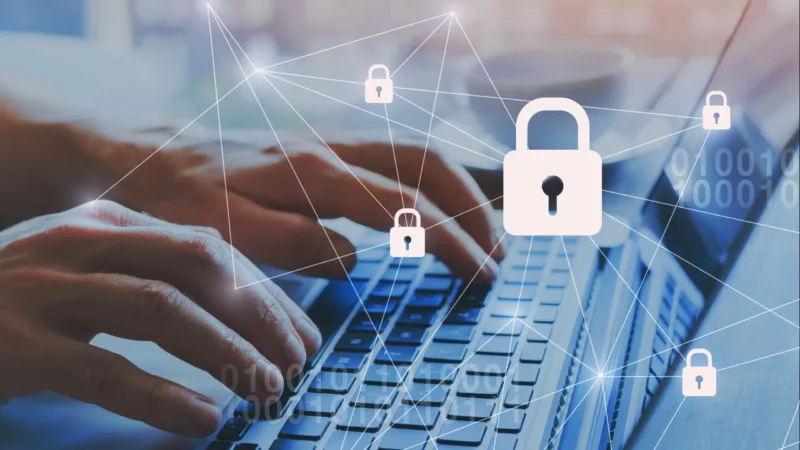As the global coronavirus pandemic enters its second year, state and local government agencies remain at the forefront of distributing emergency aid to individuals who have lost their jobs, are going hungry, and may be facing eviction or foreclosure.
Unfortunately, with more than $4 trillion approved for COVID-19 relief aid, fraudsters and scammers have a huge opportunity to divert that money from the people who need it and make themselves rich.
According to the Thomson Reuters Institute report, 2021 government fraud, waste, and abuse study, COVID-19 impacts and aftermath, 93% of responding government officials and administrators believed the prevalence of fraud, waste, and abuse would stay the same or even increase in 2021. At the same time, 62% of those same respondents identified “budget constraints and resources” were their “most pressing issue.”
Thomson Reuters and the Association of Certified Fraud Examiners (ACFE) recently hosted a webinar, Pandemic fraud in government: A look back at 2020 and a look ahead to 2021. The panelists, Amanda Huston, senior director of fraud, risk and compliance for Thomson Reuters Pondera, and Marco Morales, manager of the Illinois Department of Employment Security benefit payment control, discussed with moderator Gina Jurva, manager of market insights and thought leadership with Thomson Reuters, how the pandemic has made it more challenging for government agencies to identify and prevent fraud and how technology can help agencies strapped for resources fight against fraud.
Because government agencies do not always have the resources to identify fraud after it happens, prevention is the best way to reduce fraud, according to Huston. While the historic approach to fraud in benefit programs was a “pay and chase,” approach, it is not an effective model in these times because the recovery rates are traditionally low.
Where other benefit programs can withhold future benefits to offset overpayments, Huston said this is not typically available for COVID-19 relief aid programs. Further, even if the agency is able to track down the fraudsters – often street gangs or international crime rings – the likelihood of recovery is “slim.”
Using “hundreds and hundreds” of hours manually trying to detect fraud, is also not an efficient use of resources according to Morales. That is time that could be spent processing applications or improving security and technology.
Prevention is key
Every government agency processing COVID-19 benefit aid has to balance “speed v. accuracy,” according to Huston, because every day to process an application can mean another day without food for a family in crisis.
That means agencies need to triage applications for risk so they can quickly process applications with low fraud risk and only devote additional screening and manual review to those applications with the highest risks.
Partnering with a technology vendor can allow a government agency to quickly identify red flags for fraud, according to the panelists, including:
- Duplicate bank accounts
- Multiple applications sharing the same street address
- Suspicious email addresses, domain names, or international IP addresses
- Using commercial mail receiving agency addresses and
- Invalid responses to identity verification questions
For example, thousands of applications may use the same email address, according to Huston. Similarly, large numbers of applications may share the same bank account information, said Morales.
Technology can be key to detecting patterns that suggest synthetic identities as well as matching and verifying applicant identities.
Who are the fraudsters?
There are three types of fraudsters who are taking advantage of the COVID-19 benefit aid programs, according to the panelists.
One group is the common “street hustler” who might be submitting individual applications for benefits to defraud the system but may also be recruiting friends and relatives to “copycat” the scam, according to Morales. Some of these frauds are also organized by prisoners. Scott Peterson, who gained notoriety for killing his wife and unborn child, was able to receive unemployment benefits from prison, according to Huston. Local law enforcement will often identify these fraudsters when the person is arrested for another offense and law enforcement finds multiple benefit applications or debit cards in their possession.
More systematic fraud is perpetrated by street gangs in cities and suburbs as well as international organized criminal groups. Some street gangs have realized that using laptops at home to commit COVID-19 benefit relief fraud is much easier than selling drugs on the streets, especially in the winter, according to Morales. Sometimes these gangs purchase information available on the dark web from data breaches and use that information to submit applications. Although in one instance, an individual working in a medical office stole patient information that she then gave to her gang-affiliated boyfriend. That boyfriend then used the information to commit unemployment benefit fraud.
Data has a “price and street value” as Huston said.
In other schemes, professional hackers attack the benefit systems directly in order to “cause chaos” and prevent agencies from screen applications for fraud, said Morales. When the systems are already stretched thin processing thousands and thousands of new applications, hacking added another layer of vulnerability making it impossible for agencies to conduct real-time identity verification of applicants.
How do you protect yourself from fraud?
The panelists also encouraged individuals to take steps to protect themselves from the identity theft that can facilitate COVID-19 relief aid fraud.
Morales encouraged individuals to check their credit reports every year to look for any suspicious activity, to use a shredder at home for any documents with personal information, and to use a VPN at home when paying bills online.
Huston pointed to the Identity Theft Resource Center, which includes resources to help individuals prevent and respond to suspected identity theft.
Jurva also noted that the IRS had issued new guidance for taxpayers who received 1099-G forms from their state unemployment insurance agencies even though that did not receive unemployment benefits. She also noted the importance of follow up to report the suspected fraud to the agency for investigation.
As the pandemic continues and more relief is approved, individuals and governments need to take as many precautions and possible to prevent this fraud.
You can access the rebroadcast of the Thomson Reuters webinar, Pandemic fraud in government: A look back at 2020 and a look ahead to 2021 here.









